Best Practices
Licenses
- Keep track of licenses from the Administrator page , Licensetab and renew before expiration.
- Pay attention to pending expiry notification on the dashboard and regular email messages sent to the administrator during the grace period.
- If different licenses exist in the account with different end-terms, consider co-terming in which all licenses expire at the same time. Customers can contact their local Ruckus sales representative to discuss options.
Figure 319 License Tab
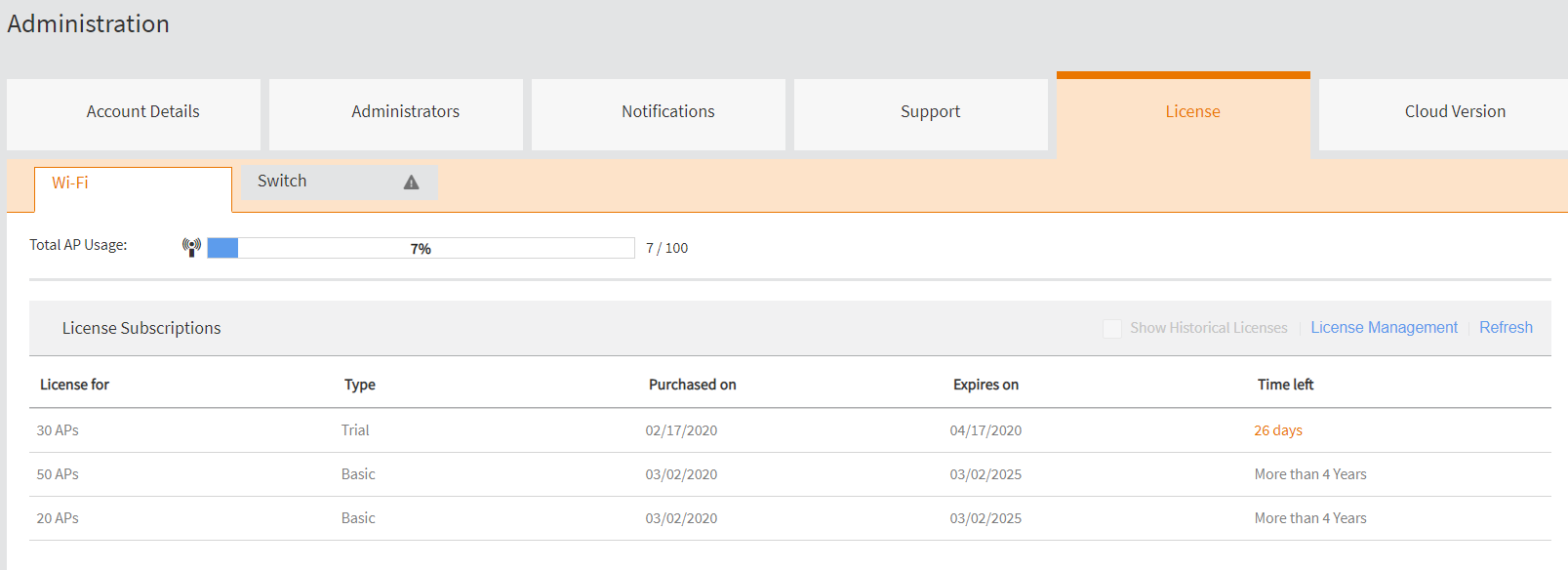
- If a VAR is in charge of multiple customer accounts, the main page changes to listing license information of their own account at the top followed by a list of all the customer accounts under management. The VAR can get in touch with Ruckus Support for licensing options if the term is at a close.
Administrator Privileges
The administrator who first activates the subscription is usually the Prime Admin who has the highest-level access to the account.
The Prime Admin can delegate operations to other administrators with different privileges such as Administrator, Guest Manager, or Read-Only access.
Inviting VARs
- Customers have the option to invite third-party administrators to manage their individual Ruckus Cloud accounts.
- The invite setting for customers is located on the Administration page, Administrators tab (beneath Local Administrators).
- The invited VAR gets Prime Admin privileges for the customer’s account.
- The permissions for other administrators in the VAR account are translated to the same permissions for the customer account. For example, an authorized user for the VAR account has read-only privileges. This authorized user gets read-only permissions on the customer account when the customer invites the Prime Admin to manage their account.
Adding a New Networking Device Using the Ruckus Cloud Mobile App
- Install the Ruckus Cloud native mobile app for remote monitoring and control.
- Enable push notifications to be alerted for critical events.
- Add new APs, switches, networks, and guest networks with the app.
Creating Venues
- Create venues based on the actual address of the deployment site. It is possible to configure buildings, floors, and so on.
- Add floor plans for exact AP placement within the site.
- Create an appropriately addressed venue that matches the AP SKU (US, WW).
Figure 320
Creating a New Venue
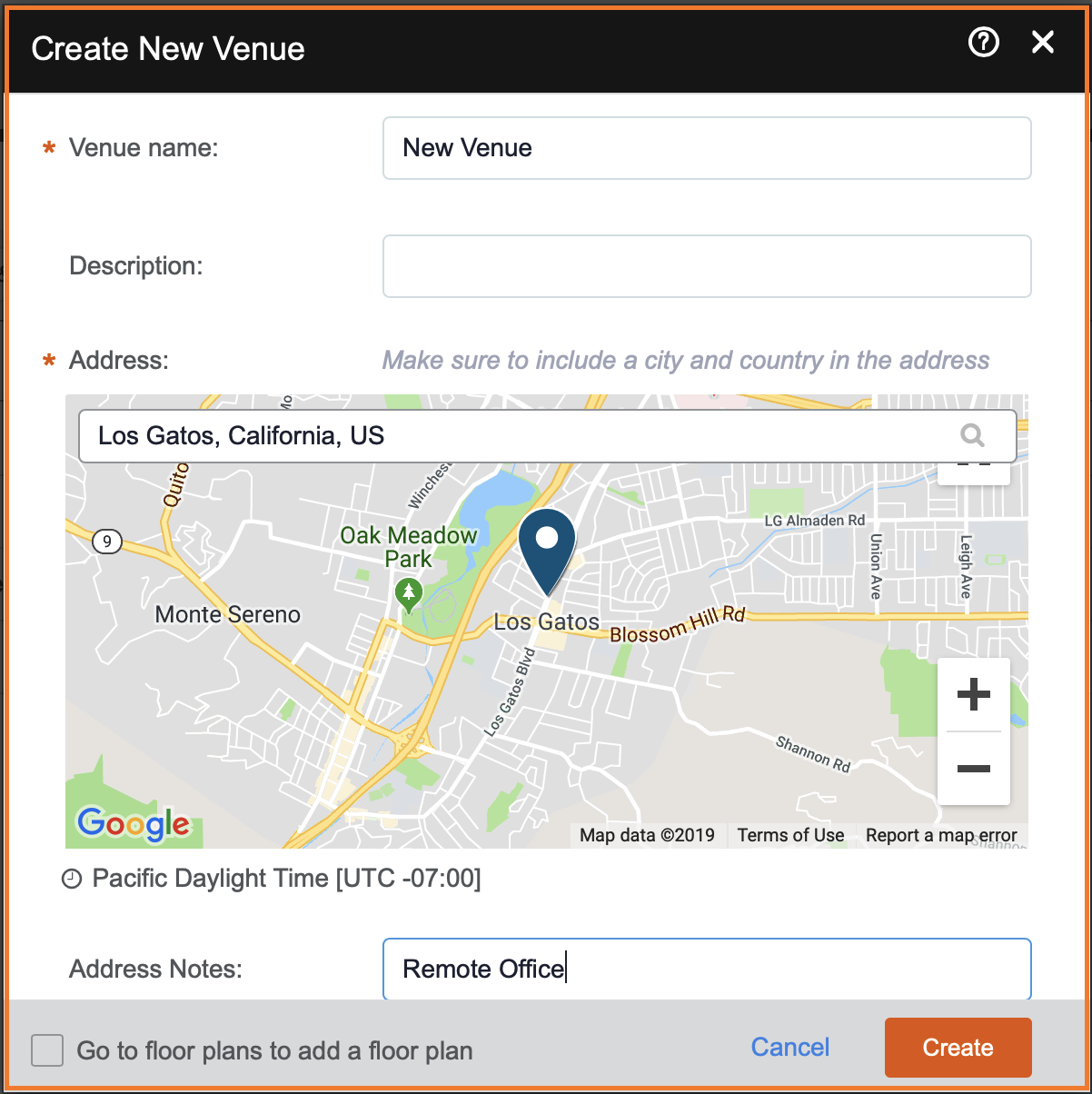
Creating WLANs
- Create separate SSIDs for different types of users: employees, guests, staff, teachers, students, and so on.
- Use the Dynamic VLAN to segregate users on the same network and APs.
- Use the scheduling option for SSIDs depending on usage; for example, preventing users from accessing the network during non-regular hours.
Mapping WLANs to Venues
- When same SSIDs are created for different venues, select the appropriate radio band and AP groups.
- Scheduling is automatically taken care of by the local time zone of the venue.
Figure 321 Mapping a WLAN to a Venue
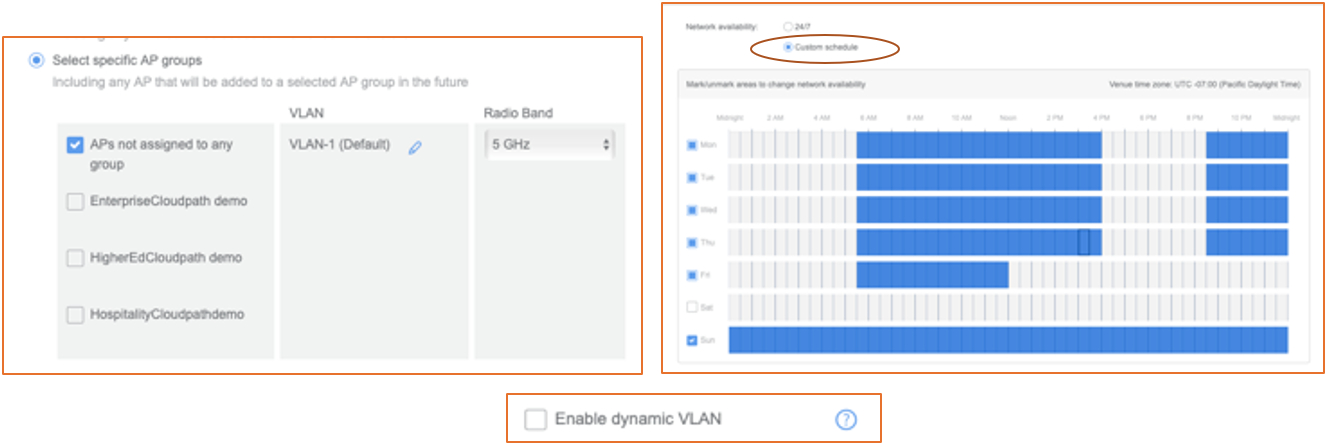
Adding APs
- Use the Ruckus Cloud mobile app to scan the serial number of the AP for provisioning.
- Use the
Import APs option using .csv format files to bulk upload APs.
Figure 322 Adding APs Using the Mobile App
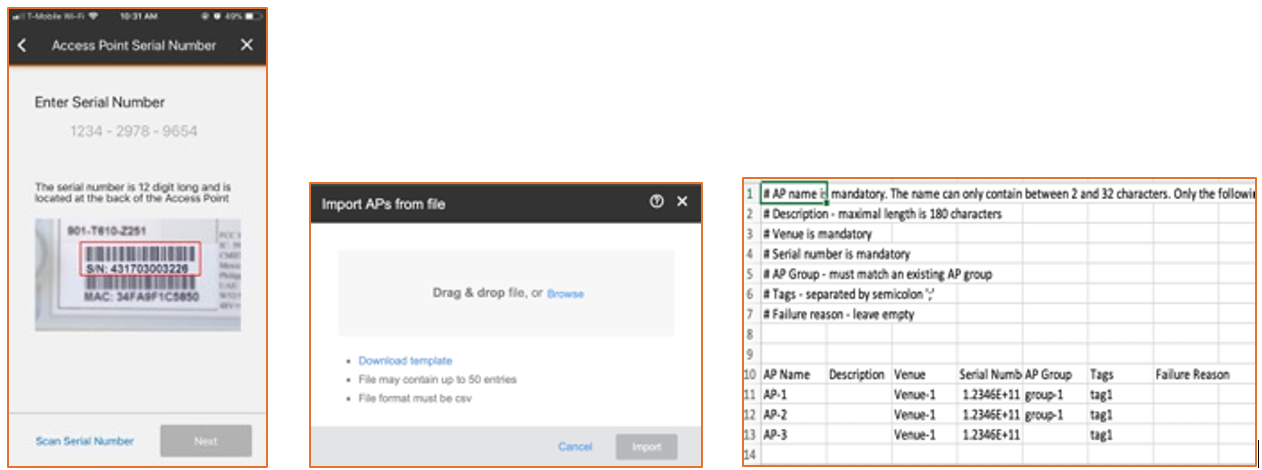
- Use floor plans to understand the optimal placement of APs in the actual site. Under
Venues, the
APs tab, upload the properly scaled maps for accurate depiction. Add the floor plan by selecting the name and floor.
Figure 323 Selecting a Floor Plan
 Figure 324 Adding a New Floor Plan
Figure 324 Adding a New Floor Plan Select Edit mode and place the APs in their locations.Figure 325 Editing the AP Location
Select Edit mode and place the APs in their locations.Figure 325 Editing the AP Location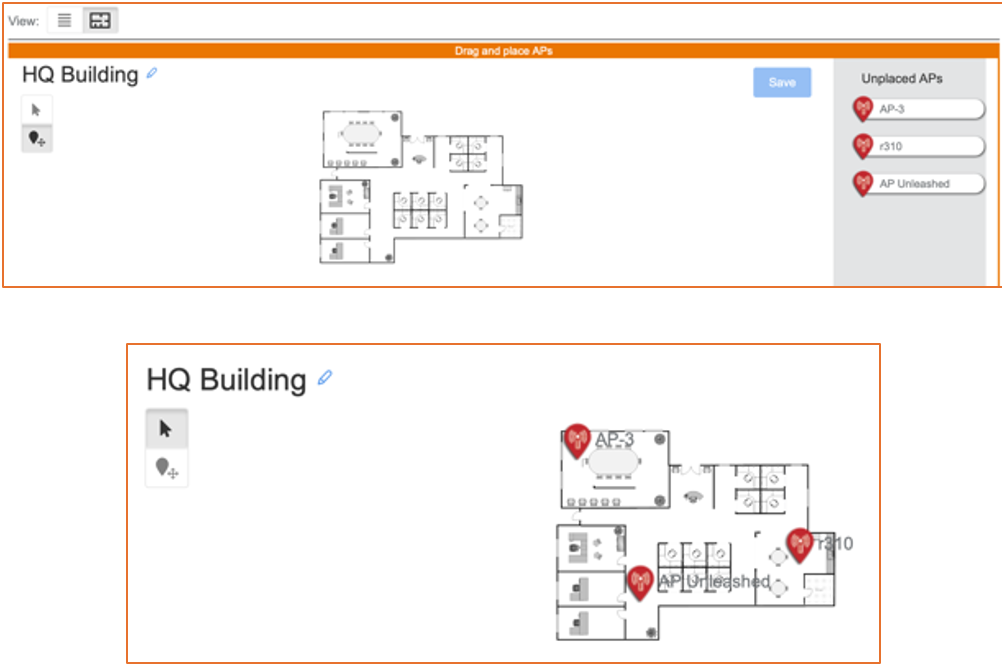
Guest Portal
- Self Sign In with social media login includes the option to add the Ruckus-hosted app or a company social media page to which users can be redirected.
Figure 326 Redirecting to a Company Social Page
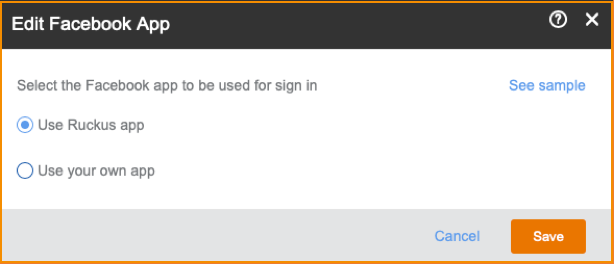
- Use time connection settings to prevent misuse of the Wi-Fi from guest users.
- Limit the number of devices per user.
- Use client isolation and force DHCP on guest client devices.
- Create traffic policies (Layer 3 and Layer 4 ACL rules) for security.
Figure 327 Access Control
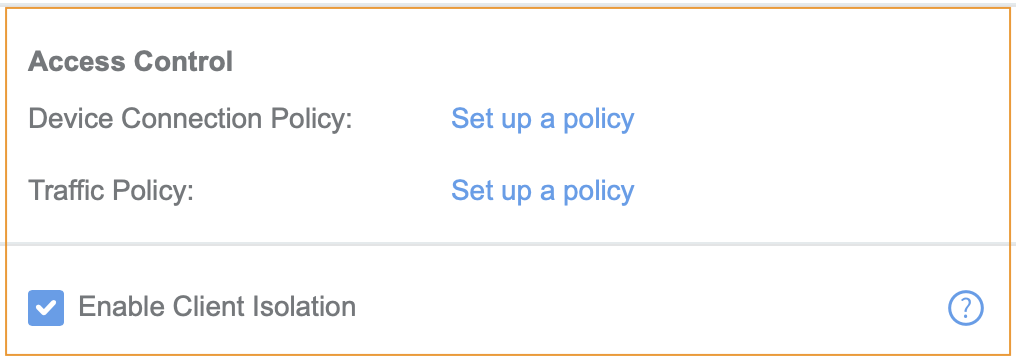 Figure 328 Adding Traffic Access Rules
Figure 328 Adding Traffic Access Rules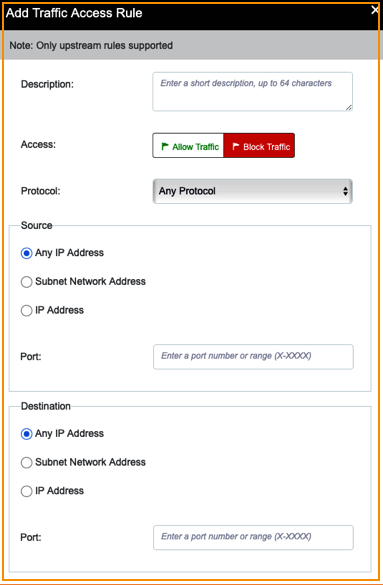
Analytics
Ruckus Cloud stores historical data for six months. It is good practice to export .csv format analytics every six months to obtain an annual report.
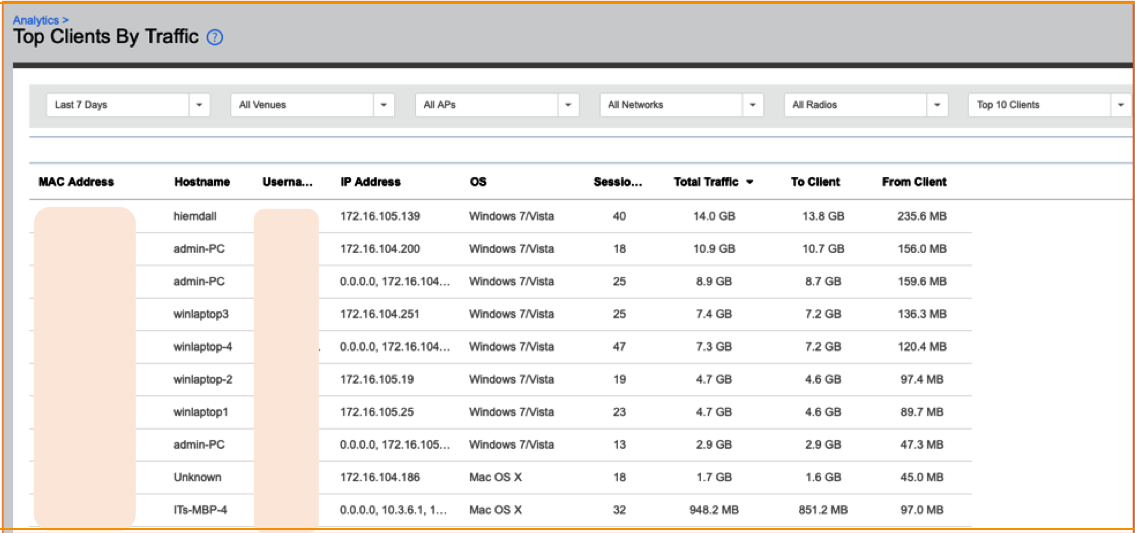
Figure 329
Top Clients by Traffic Volume

Other best practices relevant for a Ruckus Cloud deployment:
- Allow TCP ports in the firewall required for Cloud discovery and continued connection of the AP to Cloud.
- An AP management VLAN must be compulsorily untagged or native.
- In a standard enterprise deployment with many network resources, create a syslog server to record and log all activities which is helpful for troubleshooting.
- Register your email and mobile number to receive notifications about critical events. If using a mobile app, enable push notifications on the application for alerts.
- Create AP groups to separate out APs serving different type of clients.
- Use the latest ZoneFlex Solo AP firmware so that APs can initiate Cloud discovery and successfully connect to the Ruckus Cloud.
